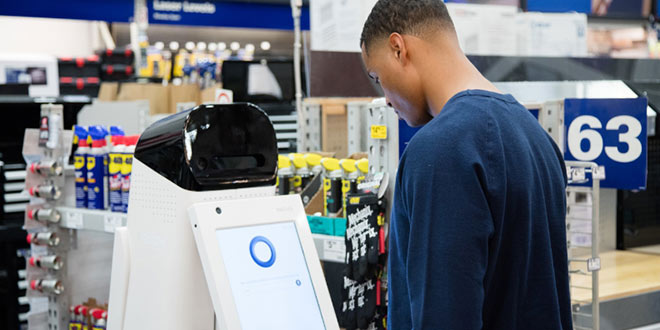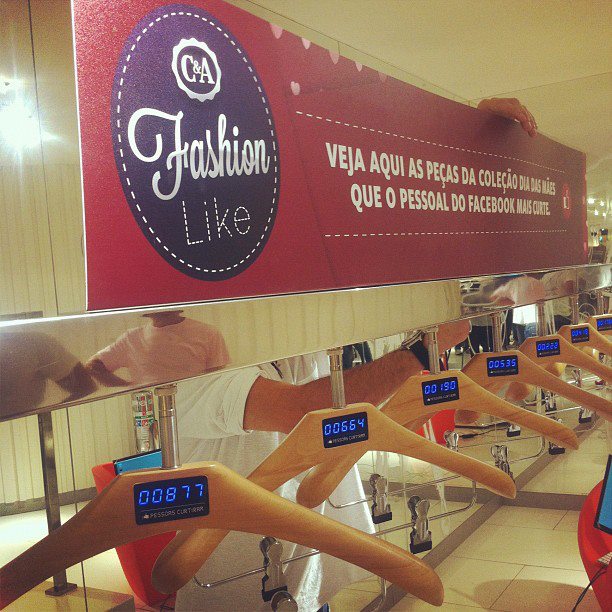You might already know the concept of Phygital Marketing from its previous iteration, Immersion Marketing.
The new catch-phrase name conveys this marketing strategy’s meaning more clearly, though: Phygital = Physical + Digital.
With 2024 finally here, there is a sense that the future has actually arrived. We have the technology to make almost anything possible, and that technology can certainly affect various spheres of commerce.
Read on to find out how to take your business into 2024 with Phygital marketing strategies and Phygital retail experiences.
Phygital could describe anything that attempts to cross the divide between the physical and digital worlds, but it is most commonly used to describe a retail experience or a marketing strategy.
Consumers themselves are Phygital; they exist in both the physical and digital worlds, and they participate in commerce in both places.
Therefore, it makes sense for marketers and retailers to inhabit this same space between the physical and digital worlds and meet consumers there.
There are advantages of both digital and brick-and-mortar commerce. Even though brick-and-mortar shopping is declining, there are still irreplaceable aspects of it that consumers continue to desire.
Consumers enjoy the interactiveness of being able to see and touch products in a physical store and talk with sales personnel.
Studies also show that consumers frequently combine brick-and-mortar shopping with digital shopping in two ways: reading product reviews online, then making well-informed purchases in a store, or touching and seeing products in a store first then ordering online.
Phygital aims to combine the best aspects of digital and physical commerce to create the ideal integrated experience for the consumer and new opportunities for retailers and marketers.
Phygital marketing and retail strategies can be a lifeline to save struggling brick-and-mortar stores, and some level of phygital implementation is likely necessary for the continuation of physical storefronts.
Phygital has a strong appeal with Millennial and Generation Z consumers, who are highly digitally connected.
Phygital is governed by the three “I’s:” Immediacy, Immersion, and Interaction. The first two “I’s”, immediacy and immersion, come from the digital realm, while the final “I,” interaction, comes from the physical realm. A successful Phygital strategy must combine all three of these elements.
VR could be used to deliver a Phygital experience for your customers. If you operate your business in a high-rent area, you could use VR to deliver a unique Phygital experience for your consumer while saving yourself valuable money and square feet.
This brick-and-mortar location equipped with VR to “display” products would allow your customers to have the advantage of interaction with sales associates while having an immersive experience by viewing products digitally through VR.
Phygital experiences can also be delivered in the food and beverage industry. Many food and beverage outlets have implemented touch screen ordering and payment, or even pre-ordering through an app before picking up at the brick-and-mortar location.
This phygital experience is nice for consumers because they still get to experience the interactive environment of the aromas of their favorite restaurant, but with the immediacy of online ordering that allows them to skip the line.
KFC is piloting fully Phygital stores in China. In these Phygital locations, consumers place their orders on touch-screens upon entering the restaurant.
Facial recognition technology is used to complete the payment. This Phygital technology also used AI to predict what consumers might want to eat and offering them customized menu options when they arrive at the ordering kiosk. Some of the food is also prepared by robots in the kitchen. The age of Phygital seems to be the age of the future.

Phygital can greatly increase your consumer’s in-store experience. Retail service robots were implemented at the San Jose Orchard Supply Store.
These bots were designed to greet customers and help them find products. This makes the shopping experience much more pleasant for the consumer, especially in a setting such as a hardware store, where customers may be unable to locate multiple products. This Phygital strategy can prevent frustrated customers from walking away without making a purchase if they can’t find a product.

The Phygital experience created by the retail bots at the San Jose Orchard Supply Store also benefited store employees: they no longer had to conduct inventory, because the bots were also created to do this. This Phygital strategy is good for everyone: the consumer, the employee, and the business’ bottom line.
Unsurprisingly, Amazon has been quick to develop Phygital experiences for their consumer base.
Their beta Amazon Go store in Seattle delivers the ultimate Phygital retail experience.
Shoppers enter the Amazon Go store by scanning a QR code on their phone. This allows the turnstile to open, and the customer enters the store.
They then select products from shelves, just as they would in a regular store, but then, they can just walk out the door.
The Amazon Go app charges the customer’s linked bank account or credit card. This Phygital experience allows consumers to skip the hassle of standing in line at the checkout and makes the shopping experience streamlined and convenient for fast-paced American lifestyles.

Nike has fully embraced Phygital retail by opening its House of Innovation flagship store in New York City.
Mannequins have scannable QR codes that allow consumers to request that a sales associate bring a specific size and color of a certain item to the consumer on the sales floor.
Nike’s flagship store is also Phygital through its instant checkout system, which works in a similar way to the checkout system at the Amazon Go store.
Phygital also allows for customization of the retail experience. Nike is an innovator here again with their Maker Studio, opened in New York in 2017.
The Phygital space allows customers to arrive at a brick-and-mortar location and use a touch-screen interface to design their dream pair of sneakers.
In the ultimate Phygital retail experience, the custom-designed shoes are created on the spot in less than 90 minutes for the consumer.
A simple example of Phygital marketing is integrating QR codes into traditional forms of marketing, like magazine ads.
The immediacy here is important: the consumer sees the advertisement and scans the QR code, which can then directly link the consumer to complete the purchase digitally.
This way, the consumer does not forget about the product before going to a physical store to complete the purchase.
QR codes can also expand into other kinds of Phygital marketing. A QR code in an advertisement in the subway could pull up a map leading the consumer directly to a brick-and-mortar store.
Social media can also be employed in Phygital marketing. A retail store in Brazil, C&A, has implemented “social media hangers” that display the number of “likes” a piece of clothing has received on Facebook in real-time.
With this Phygital marketing strategy, consumers can have the satisfaction of browsing C&A’s clothing online, “liking” particular pieces on Facebook, and then purchasing “liked” clothing items from the brick-and-mortar shop.

Today’s consumer is proficient in conducting online research to make informed purchase decisions.
Because consumers love reading reviews, and because reading reviews leads to product purchases, why not use Phygital marketing to integrate product reviews into the brick-and-mortar shopping experience?
This Phygital marketing strategy could look like this: A consumer enters the store and is able to activate digital touchscreen devices next to each product, which aggregate consumer product reviews from across the web into one place. Or, the customer could scan a QR code next to any product and receive the aggregated reviews directly on their smartphone.
Tech company Magik Book created a unique Phygital marketing strategy: interactive books.
For a Porsche showroom, Magik Book created a physical marketing catalog displayed in car showrooms.
The Magik Book is digitally connected, and as the consumer flips through the pages, related and more detailed content is displayed on a nearby television screen, creating a unique Phygital approach.

The incredibly popular Pokemon Go was a very successful and well-known example of Phygital marketing.
This game, in which players picked up Pokemon at various points in the form of augmented reality, provided an unprecedented opportunity for marketers to reach consumers.
Another well-known example is digital push notifications; when a consumer is walking near a particular coffee shop, they get a coupon or other incentive to stop and visit the brick-and-mortar location.
Phygital can also greatly increase the consumer retail shopping experience. A leader in the field of Phygital retail for fashion is Rebecca Minkoff, who partnered with eBay to develop technology for smart fitting rooms in retail stores.
Rebecca Minkoff stores have a selection of physical items on display, so the store still looks like a traditional retail space, but the technological magic happens with the Phygital retail technology implemented in mirrors and fitting rooms.
If you approach the mirrors lining the wall of a Rebecca Minkoff store, you’ll soon realize that these “mirrors” are actually giant interactive touchscreens.
First, the touchscreen mirror will ask what you’d like to drink, with options ranging from green tea to champagne.
A store associate will bring your drink within a few moments, and while you wait, you can start choosing items you’d like to try on from the “mirror.”
After you’ve made your selections, just walk back to the Phygital fitting rooms; as soon as you enter, your phone and the fitting room mirror-touchscreen will communicate, and the fitting room will know you’ve entered.
You can use the touchscreen to adjust the lighting; how would this outfit look with a soft “Hudson River Sunset” ambient glow?
If you want a different size in an item, request it through the Phygital touchscreen.
An interface similar to Uber is then deployed, displaying the name of your sales associate and when they’ll arrive at your fitting room with the size you requested.
These inspiring Phygital marketing examples are sure to be implemented by other retail chains.
Today’s consumer is Phygital: they make consumer choices and purchases both digitally and in the physical world.
This creates an opportunity for marketers and retailers: meet consumers in the Phygital space they are already familiar with.
Even though brick-and-mortar business is declining, there are still aspects of physical stores that consumers enjoy.
Phygital marketing and Phygital retail experiences can breath new life into brick-and-mortar stores as well as create new marketing opportunities.
Phygital combines the best of the physical and digital worlds to create an entirely new experience for the consumer.
Phygital experiences will be embraced by Millennial and Generation Z consumers.
Phygital marketing is a marketing strategy that bridges the divide between the physical and digital world to provide a unique interactive experience for customers, where these two worlds are blended into one. Customers are essentially phygital as they inhabit both the physical and digital worlds. It is therefore important for marketers and retailers to utilize this space between the physical and digital worlds and meet the consumers in between.
Phygital is a term used to describe the divide between the physical and digital world, and is most commonly used to describe a retail experience or a marketing strategy. Phygital makes use of technology to create a digital experience that is user-friendly and seamless for the customer.
Phygital retail is a form of digital shopping that aims to surpass the expectations of customers, in creating an immersive brand experience. The best example can be seen when retailers include customer services such as click and collect or buy online and collect in store. Here the retailers aim to reduce time-wasted in queues or waiting for shipping, by merging the world of online shopping with the customer satisfaction of purchasing products directly in the store.